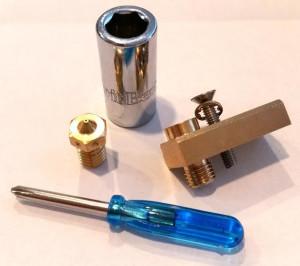
One of these inventions is the Olsson Block, which we reported on last week. The block was created by Ultimaker customer Anders Olsson to make changing 3D printer hot end nozzles quick and easy, without having to replace the entire heating block. Ultimaker was so impressed with the invention that they bought it from Olsson. Wanting to get it into the hands of as many customers as possible, they have been giving away a free block with the purchase of an Ultimaker 2 or Ultimaker 2 Extended printer during the month of November, and it already seems to be making an impact on the architectural industry.
Henrik Bejmar, an architect at Swedish architectural firm Sweco, is part of a team tasked with the daunting assignment of expanding an entire city. Colombo, Sri Lanka will be getting a 280 hectare addition which will include up to 90,000 new apartment units and 200,000 office spaces.
To begin conceptualizing such a massive undertaking, the team obviously needed lots of architectural models, and they needed them fast. The company had been using 3D printing for a while, so it was the obvious choice for their latest project. Using an Ultimaker 2 Extended printer, the team quickly produced a scale model of the entire expansion.
“It’s much easier to use 3D printing for this project because it’s so detailed,” says Bejmar. “Because of the size of the project, you need to print at a slightly smaller scale to actually be able to get a huge scale model.”
When the team found out about the Olsson Block from Ultimaker, they knew immediately that it would be perfect for their project. The varying sizes of the models were easily printed to scale with the interchangeable nozzles, which may not have been feasible with a printer using a standard heating block. The larger parts of the model, which were printed using the 0.8mm nozzle included with the block, were completed twice as fast as they normally would have been. The smaller models were printed using the 0.25mm nozzle, which enabled precise detail.
Naturally, such an accurately scaled and detailed model was impressive to clients, and the team itself saved a great deal of time and money, which is critical in such a large project with tight deadlines.
“The future of 3D printing is very interesting,” Bejmar concludes. “I think it’s going to be used in conjunction with actual cardboard models, but for projects that we have it’s a very easy to use tool to visualize the models that we have for the clients, and also as a tool for building the models ourselves.”
The future of 3D printing is going to be interesting indeed, if its growth continues to be driven by individuals as much as corporations. I look forward to seeing what customer-invented product will the next thing to catch on within the larger industry.
Discuss this story in the Olsson Block 3D Printing forum thread on 3DPB.com.
